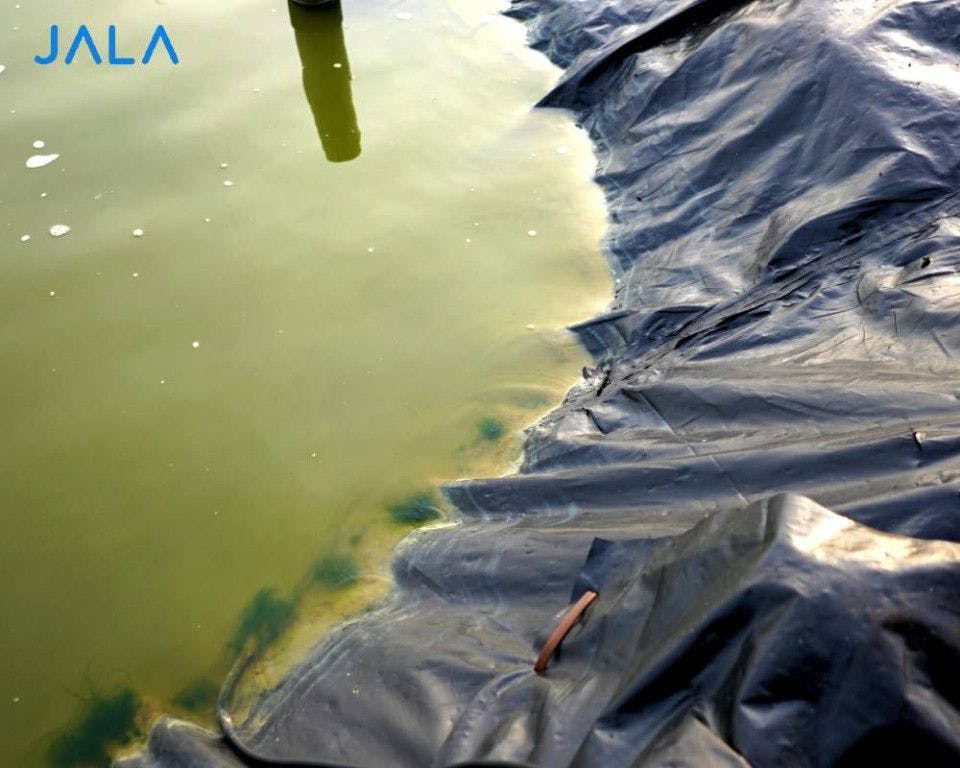
Total Organic Matter is a water quality parameter in shrimp farms which reflects the amount of organic matter from uneaten feed, feces, and metabolic byproducts. This parameter is usually seen as waste at the bottom of the pond or in water suspensions. The quality standard for total organic matter (TOM) in cultivation water is < 55 ppm. In water which has undergone treatment in tanks, the recommended TOM is < 20 ppm.
A high TOM concentration may occur due to death of plankton and overfeeding. Increase in leftover feed can be observed from the increase in total organic matter suspended in water or at the bottom of the pond. Dirt foams in pond water also indicate high organic matter. High organic matter and its consequences towards water quality parameters may impact the amount of feed consumed by shrimp.
High organic matter concentration also decreases DO. In water, a low dissolved oxygen (DO) level, or < 4 mg/l, causes various problems for shrimp, such as decreased appetite, emergence of disease, and even mortality. With high TOM, there is more materials to be utilized by microorganisms at the bottom of the pond, increasing biological oxygen demand (BOD) and decreasing DO. BOD is the total oxygen used by microorganisms to decompose organic matter.
A low DO is caused by the decomposition of organic matter by bacteria which requires it, causing the bottom of the pond to be in anaerobic conditions. High BOD indicates a high amount of organic waste in the pond. The excessive accumulation of waste due to the drastic drop in DO usually occurs at night or in the morning.
The combined effect of high TOM at the bottom and lack of oxygen causes the formation of hydrogen sulfide (H2S). Hydrogen sulfide is the byproduct of sulfate-digesting bacteria from organic matter in anaerobic conditions, usually at the pond bottom or mud. H2S can inhibit shrimp from absorbing oxygen.
How to deal with high TOM
If the TOM value is too high, some actions farmers can take are evaluating feed amount, disposing dead plankton, increasing siphoning, administering probiotics and replacing the water. These steps can be taken to maintain the amount of organic matter:
- Giving shrimp feed in packages based on population and growth potential can minimize the accumulation of organic matter in the farm to inhibit bacterial growth. Fix feed management to prevent overfeeding which in turn causes high waste and increased oxygen demand.
- Administering probiotics as a controlling agent. Probiotic application aims to equip bacteria which can decompose organic matter for when the cultivation has sufficient bacteria. Use probiotics which consist of bacteria which are able to decompose organic matter such as Bacillus spp. Probiotics manipulate the pond microorganism population to mineralize organic matter and remove excess waste compounds. They also suppress the growth of pathogenic bacteria and increase the growth of beneficial bacteria which improve water quality and shrimp health.
- Controlling the presence of phytoplanktons to prevent mass mortality and maintain oxygen deposit. Phytoplankton mass mortality can be mitigated in several ways, such as regular water replacement and regular application of lime, especially dolomite, to increase water alkalinity.
- Maintaining water current in the farm to ensure that organic matter stays in suspended condition and is gathered in the right suspension point. This calls for proper determination of the amount and placement of windmills to maintain organic matter concentration.
- Replacing water and siphoning the bottom of the pond. In closed-system cultivations, water replacement only replaces water that has been lost due to evaporation and leaking (water addition). However, some farms replace 10-20% of the water to control the amount of organic matter, dilute excessive or oversaturated planktons and harmful bacteria, fix certain parameters such as an overly high concentration of organic matter, and reduce toxic gas.





